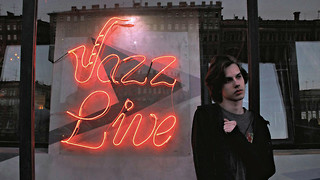London Fashion Week Men’s 2018: trends and highlights
Reflecting on the London Fashion Week Men’s 2018, Gian Hayer gives us the biggest trends and highlights directly from the catwalks
‘The chapter is coming when your light is discovered’. These words from James Massiah’s poem ‘Chiswick Church’ began this season’s London Fashion Week Men’s, introducing the theme of discovery to the proceedings. Without a doubt, the overarching concept of Massiah’s poem transcended the Autumn/Winter 2018 collections, and although there were fewer political statements present compared to recent seasons, the innovation shown resulted in a fashion week that was incredibly sleek and refreshing. Here are the biggest trends and highlights you need to know about from London Fashion Week Men’s AW18.
TREND: The ‘anti-suit’
One of the biggest trends seen this season, the ‘anti-suit’ provides for the discovery of a new generation of men stepping into workplaces with increasingly relaxed dress codes. The matching of tops with trousers in streetwear and sportswear rather than formalwear was seen throughout the week, including in Tinie Tempah’s highly anticipated What We Wear collection, with the designer aiming to create a “uniform for life” for young men. The ‘anti-suit’ was also seen in the collection by Band of Outsiders, with mustard and brown ensembles creating the biggest impact.
HIGHLIGHT: The MAN Show
This season, the MAN show included a widely-acclaimed collection by Rottingdean Bazaar, which was comprised of clothing produced by objects that had been found, such as dartboards and badges. The show also included a collection by Art School, with non-binary models donning genderless garments, celebrating the originality of gender-queer style. Both Rottingdean Bazaar’s use of found objects and Art School’s exclusive inclusion of non-binary models breathed an air of youthful discovery into the proceedings, firmly setting the show apart from other collections in the week.
TREND: The oversized grey suit
A trend seen consistently over the course of the week, in both the street fashion of the audience and on the catwalks, was that of the oversized grey suit. Alex Mullins’ collection stood out in particular for its hybridisation of this lasting trend with psychedelic tie-dye accessories, homing in on the theme of discovery that held precedent throughout the week.
HIGHLIGHT: John Lawrence Sullivan
This designer’s collection distinguished itself from others by leaning towards a much more masculine edge. With the extensive use of leather and denim, the collection starkly contrasted the idea of gender fluidity that reigned over a large majority of collections in previous seasons. Still, the exaggerated masculinity in Sullivan’s use of cowboy boots and rodeo vests, along with the inclusion of both male and female models, seemed to question what masculinity constitutes in itself. The result was a collection that served as an intriguing, albeit subtle, statement on gender.
TREND: Tartan
This season, tartan was worn by models and audience members alike more widely than ever before. In a collection by Astrid Anderson, tartan patterns consisting of muted colours of beige, black and blue on oversized coats and trousers resulted in a line that looked relaxed yet accomplished. Ermanno Scervino’s collection, on the other hand, made use of brighter tones of red, yellow and blue in its tartan patterns, while in the audience red and black tartan patterns stood out against grey outfits, adding a pop of colour to already polished ensembles.
HIGHLIGHT: Daniel W. Fletcher
While Fletcher was renowned for his anti-Brexit presentation during London Fashion Week Men’s for Spring/Summer 2017, it seems clear that this season the designer’s sense of rebellion is much subtler. As a whole, the collection presented an unconventional take on classic tailoring styles, such as the addition of drawstring waists to striped Oxford shirts and statement suits with flared trousers. By taking influence from the rebellious youth movements of the 1980s, the designer is looking to the past in order to rediscover the future. In doing this so successfully, Fletcher has deservedly become one of the must-see designers of 2018.
Although there were many individual successes that shone through over the course of the event, LFWM AW18 as a whole was a triumph in its own right. Yes, there were fewer political statements present compared to previous seasons, but the success of the Fashion Week lay with the seemingly subconscious collective decision to focus on innovating for the future. Rather than fixating on current problems, designers used fashion as a medium to encourage progression and improvement for the future, highlighting discovery as a fundamental part of this process
 News / Cambridge scholarship recipient trapped in Gaza21 July 2025
News / Cambridge scholarship recipient trapped in Gaza21 July 2025 News / Chancellorship candidates express concern about conduct of election 19 July 2025
News / Chancellorship candidates express concern about conduct of election 19 July 2025 News / News in Brief: Chaucer, coffee-houses, and challenging degrees20 July 2025
News / News in Brief: Chaucer, coffee-houses, and challenging degrees20 July 2025 News / Trinity exam burglar jailed for 11 months18 July 2025
News / Trinity exam burglar jailed for 11 months18 July 2025 News / Write for Varsity this Michaelmas13 July 2025
News / Write for Varsity this Michaelmas13 July 2025







